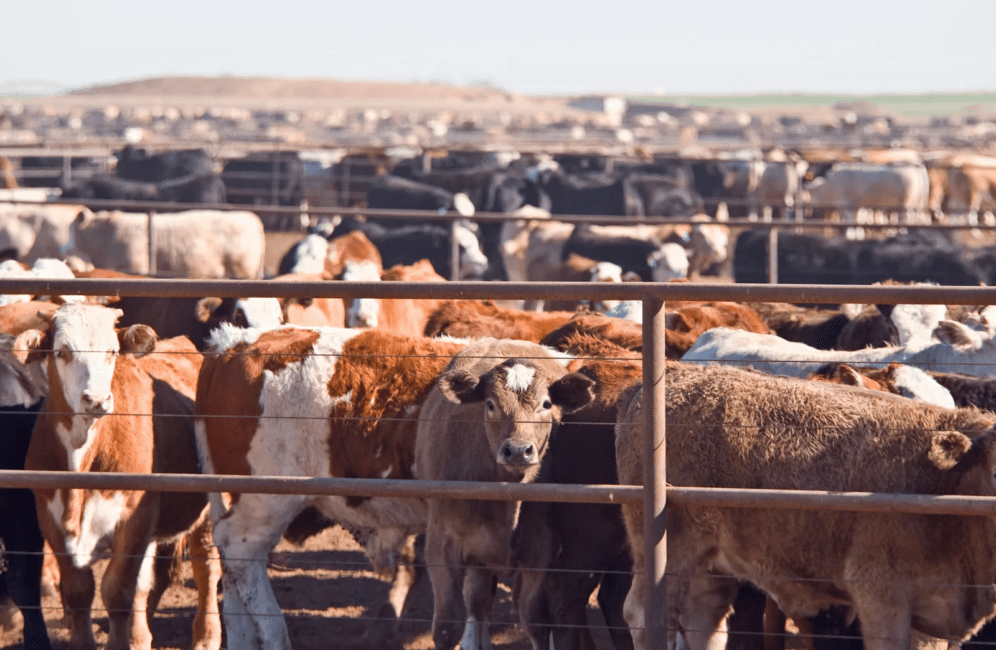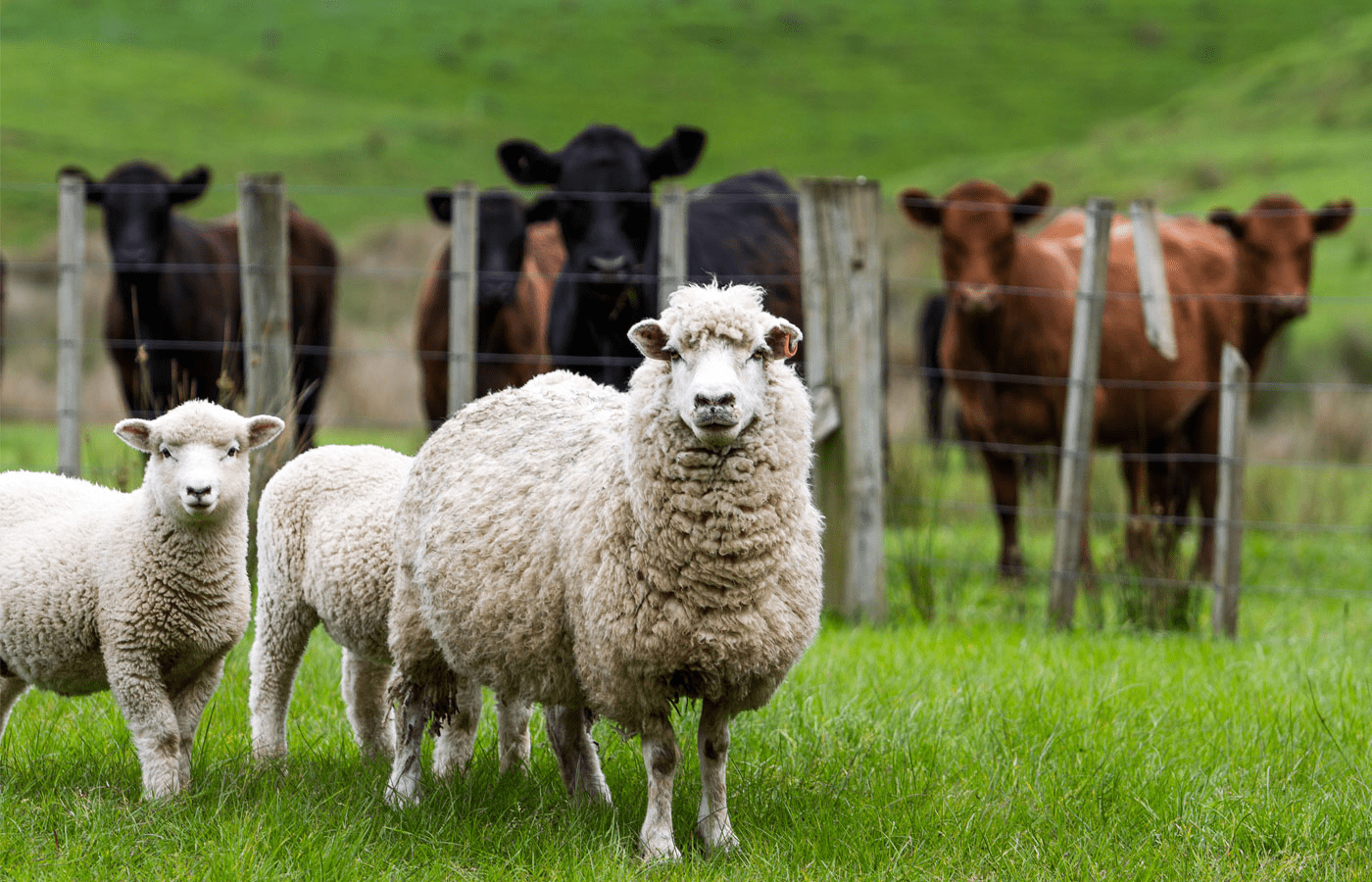This article will give you a basic knowledge of what ruminant animals are, and the role they play in the livestock sector. Some common terminologies used in describing cattle, sheep, and goats will be defined to give you a clear understanding about ruminant animals.
Ruminant animals are animals having four-compartment stomachs namely, rumen, reticulum, omasum, and abomasums. They are animals capable of ruminating or chewing curd.
Read Also General Features of Ruminant Animals
Difference Between Ruminants and Other Animals
Ruminant Animals are animals that have evolved to have specially adapted digestion tracts that help them survive on coarse herbage. Most of the carbohydrates are stored in plant material in a form that cannot be digested by simple stomach animals (mono-gastrics).
This is due to the presence of B-links which joined together. Ruminant animals on the other hand have micro-organisms (bacteria, protozoa, and fungi) living in the rumen and reticulum.
These microorganisms can break down the B-links to release energy in the form of valuated fatty acids (VFAs). This is a very close symbolic relationship from which both the microbes and ruminant animals benefit. The micro-organisms profit by being in a warm, controlled environment where they receive a constant supply of nourishment.
The animal gains by receiving the waste products from the micro-organisms, by receiving some food that has been predigested, and by having a supply of both living and dead micro-organisms in its digests which are also a source of nutrients.
The four-chambered stomach enables the ruminant to have extra space. This acts as a series of vats that store food and allow fermentation by the micro-organisms.
Examples of ruminants are cattle, sheep, goats, llamas alpacas, and buffalo. For this course, we will concern ourselves mainly with cattle, sheep, and goats.
Role of Ruminant Animals in Agriculture

Ruminants occupy a very important place in the livestock sector as explained below;
1. Sources of Meat
Contribute about 85% of the total national meat supply, while in Africa sheep and goats contribute about 14% of the total meat supply. In Nigeria for instance, the contribution of small ruminants (sheep and goats to the nation’s meat supply is much higher than this representing about 35% of the nation’s meat supply.
2. Sources of Milk
It is estimated that there are about 220 million dairy cows in the world producing about 430 million tones of milk per year. Africa is said to produce about 10-30% of this amount, out of this amount 14% comes from sheep and goats. In some African countries sheep and goat milk is a major source of milk supply for consumption.
3. Hide and Skin
Apart from food supply, ruminants also provide hides and skin. Leather from ruminants in the past was a major source of foreign exchange. The famous Moroccan leather is obtained from the skin of a red Sokoto goat. Developing countries in Africa like Nigeria are not major producers of wool or hair.
Africa produces about 37,000 tones of greasy wool per year. This represents only about 1% of the world population. Sheepskin is used for clothing in the highland areas of Ethiopia and Nigeria.
4. Draught Power
Cattle is a very important source of farm power in Nigeria and different parts of the world. This is accessible to peasant farmers who can’t afford mechanized farm power. It has greatly reduced dependence on mechanized farm power which is very costly. It has enhanced the volume of crop production in the area of use. Bullocks are the preferred type. Cattle are also used locally for transport.
5. Manure
Ruminants are as well as other animals’ soil fertility. Farm manure which consists of animal faecal materials is used to fertilize farm lands. Manure from tethered sheep and goats is collected and spread in crop fields as fertilizer.
6. Social Functions
Ruminants are a source of prestige to farmers. It represents the position of the owner and the family in the society. Ruminant animals are seen as a measure of the status of the owner in society as mobile banks by nomads as insurance against crop failure by mixed farmers and as items of religious worship and marriages by various groups of traditionalists.
Read Also Best Feeds for Young and Adult Ruminant Animals
Common Terms Used In Ruminants Animal Production
1. Cattle
- Bull:- A matured male bovine (cattle or buffalo).
- Cow:- A mature female bovine that has given birth at least.
- Calf:- Young cattle buffalo of either sex.
- Heifer:- A young female cattle that is yet to give birth. It is closer to maturing than a female calf.
- Steer – A young male cattle that has been castrated before maturity.
- Stag/Bullock – A male cattle that is castrated after maturity.
- Veal – Meat from young cattle that has not been exposed to any other food except cow milk.
- Beef– Meat from cattle.
- Parturition:- All giving birth (calving).
- Hide:- Bovine skin
2. Sheep
- Ewe:- Female sheep which has lambed.
- Ram:- Adult male sheep, usually used for breeding.
- Lamb:- Young sheep usually under months or before weaning.
- Cull:- Ewe that is removed from the breeding flock because it is old, unproductive, or unwanted.
- Maiden Ewe:- Adult female sheep that has not been mated.
- Ginmmer:- Female sheep aged 6 months (or from weaning) to the first lambing.
- Ewe Lamb:- Female lamb.
- Ram Lamb:- Malelamb.
- Hogg, Hogget:- Sheep aged 6 months to 2 years.
- Weather:- Castrated male sheep, older than 6 months.
- Mutton:- Meat from matured sheep.
3. Goat:
- Buck:- A matured male goat.
- Doc:- A mature female goat.
- Chevon:- Meat from goat.
- Kidding:- Act of giving birth.
- Mohair:- Hair obtained a breed of goat.
- Cashmere:- Fine sort hair obtained from cashmere goat.
Digestion in Ruminant Animals
Digestion is defined as the series of processes by which the mixture of complex materials found in food is broken down into small fragments that can be absorbed and used by the animal. The gastrointestinal tract acts as a tube starting from the mouth and ending in the anus.
In places, the tube is widened to farm chambers. There are also side chambers that can empty secretions into the main part of the gastrointestinal tract. The wall of the tube is an important part of the mechanism, of digestion because all the materials the animal gets from its food are absorbed through it.
There are two types of digestion in the ruminants,
Ruminant animals, like cows, sheep, and goats, have a super cool digestive system that’s a bit different from ours. They’ve got this special four-chambered stomach that helps them digest tough plant material in a really efficient way. Now, when it comes to digestion in these critters, there are two main types: the rumination process and the fermentation process.
First up, let’s talk about rumination. Ever heard of a cow chewing its cud? Well, that’s rumination in action! Ruminants have this amazing ability to bring back up partially digested food from their stomach to their mouth to chew it some more. This might sound a bit gross to us, but it’s actually super important for them. See, when they chew their cud, they’re breaking down that food even more, which makes it easier for their stomach to fully digest later on. It’s like giving their food an extra round of processing to make sure they get all the nutrients they need.
Microbial digestion occurs in the fore-gut (rumen, reticulum, and omasum). The rumen and reticulum account for about 70% of the volume of the entire gastrointestinal tract. The rumen and reticulum are only separated by a fold in the wall without any specific orifice joining the two chambers Because of this, these two chambers are often referred to as the reticula-rumen.
Food materials from the esophagus enter the rumenat the junction of the rumen and reticulum. As a result of these hard objects or foreign bodies such as stones, and nails are collected.
Now, onto fermentation. This happens in the rumen, the largest chamber of a ruminant’s stomach. In here, there’s a whole party of tiny microorganisms, like bacteria and fungi, that work together to break down those tough plant fibers that other animals can’t digest. It’s like having a team of tiny helpers inside their stomach! These microorganisms break down the food through fermentation, which releases energy and nutrients that the ruminant can then absorb and use for things like growth and producing milk.
So, to sum it up, ruminant digestion involves both rumination, where they chew their cud to further break down their food, and fermentation, where microorganisms in their stomach help break down tough plant fibers. It’s a pretty amazing process that allows these animals to thrive on a diet of grasses and other fibrous plants!
Read Also How to Control Pests in the Garden






